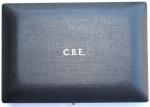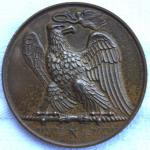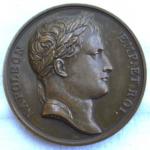-
Posts
13,225 -
Joined
-
Last visited
-
Days Won
22
Content Type
Profiles
Forums
Blogs
Gallery
Events
Store
Everything posted by Mervyn Mitton
-
One of the best known Honours awarded by the British Government is the Most Excellent Order of the British Empire. There are varying degrees within the Order and they are tailored to be suitable for the different categories of those who may be honoured. Some years ago the Order was much sought after by Diplomats, Civil Servants and the Military. However, over recent years it has become the award for ageing pop stars, old sportsmen and retired gas board officials. Never mind - it is still a high honour. The varying degrees are as follows - in order from the most junior : Medal of the Order of the British Empire - BEM Member of the Order - MBE Officer of the Order - OBE Commander of the Order - CBE Dames Commanders - DBE Knights Commanders - KBE Knights and Dames Grand Cross - GBE The one illustrated here is the CBE - second issue. Originally it had the figure of Brittania - this was later changed to the profiles of King George 5th and Queen Mary. This was originally to the Colony of Swaziland and his date of death is shown on the instruction sheet.
-

NAPOLEON 1st MEDALLION
Mervyn Mitton replied to Mervyn Mitton's topic in Coins & Commemorative Medallions
-
I don't think we must get too excited about this medallion - it is almost certainlt a re-strike. However, it has a nice patina and the detail is sharp and clear. I was quite excited until I found '1976' and 'Bronze' stamped into the rim - in tiny letters. To the left of the 'N' at the base is the name DENON with DT underneath. Does anyone have any info on the original - or, who may have struck this ? Please don't tell me it is Chinese...
-

Italian Carabinieri Visor Cap
Mervyn Mitton replied to Paul L Murphy's topic in Police Forces of the World
That is superb. Mike you shouldn't be 'taunting' Paul like this......... -

Nazi gold on ebay!
Mervyn Mitton replied to bigjarofwasps's topic in Coins & Commemorative Medallions
A fascinating story and well researched, thankyou - I have enjoyed following-it. However, I would take a bet that Spain never sees any of the gold..... Mervyn -

GERMAN IMPERIAL & WEIMER BANKNOTES
Mervyn Mitton replied to Mervyn Mitton's topic in Coins & Commemorative Medallions
I don't want to 'clog-up' the threads, however,I thought some of you may be interested in their fate . They sold - to a collector - for £75 ($110). So, as Paul said - not worth a fortune. -
Hi - Paul. Pins are not my interest - however, I will say that some of the ones you show will be of great interest to the collectors. What I did think interesting was the progression of cap badges from 1873. This of course, was the foundation year of the North West Mounted Police and they have kept quite faithfully to the original design. I wonder who actually thought of the Bison Head ? The uncontrolled killing of these animals is what lead to the Little Big Horn - followed by the Sioux Nation under Chief Sitting Bull, entering into Canada.
-

Italian Carabinieri Visor Cap
Mervyn Mitton replied to Paul L Murphy's topic in Police Forces of the World
Paul - I think I was having a very ' senior moment ' - was tending to think of Force initials..... Are we talking about the same cap - you say badge is gold bullion ? -

(another) Bayonet ID please .. KW&C
Mervyn Mitton replied to nazfrank's topic in Swords & Edged Weapons
Brian's details are correct and it was the short version of the sawback bayonet - they had a much bigger version known as the buther blade. During WW1 the British let it be known that any German soldier found with the saw teeth intact would be shot. They then tended to file the saw blades off. These bayonets were popular in German South West Africa. In good condition they can easily fetch £150/£250 ($240/375) - however, I would say this is showing it's age and has the saw back missing. Since you are planning to sell the bayonet I am not prepared to recommend a price - you can check on Google - give the details and mention prices - that usually brings something-up. -

Italian Carabinieri Visor Cap
Mervyn Mitton replied to Paul L Murphy's topic in Police Forces of the World
As you say, Paul - an atractive cap. I have one of the badges in the shop - I think for just pre-war. What does 'IR' stand for ? -
Sorry, Gordon. If Bytown was based on the outskirts of Ottawa - then that is where the truncheon is supposed to be. I heard about it some 25/30 years ago when I was researching the book - but like so many things in life, never got around to following it up. I have the only known (at this stage) tipstaff for Canada - North West Mounted Police Supt. issued in 1875 - to be able to show pictures of the only known truncheon and tipstaff, would be important historically. I shall look forward to seeing if you are succesful. Mervyn
-

New Things I Purchased for my Collection
Mervyn Mitton replied to a topic in Middle East & Arab States
Out of interest a Caran d'ache is regarded as one of the top pen companies in the World. So, he gave good gifts... -

New british P1892/95 infantry officer's sword
Mervyn Mitton replied to Jonathan Hopkins's topic in Swords & Edged Weapons
Sorry, Jonathan - for some reason I had decided in my mind that you were British. What a 'dreadful' insult to a Yank (?) The Zulu table looked interesting - the prints are from the Illustrated London News of 1879 and the spears look genuine. Not sure of the significance of the Lee Metford or, the percussion carbine. The British troops were using Martini-Henrys. However, there has always been great interest from the US in the Anglo Zulu War. Was he selling, or, just displaying ? Best wishes Mervyn -
Hi - Gordon. Will be helpful for badge identification to have confirmation on the Canadian Gaunt's. You mention Bytown - I think that is just outside of Ontario ? This is a little off topic - but does concern early Canadian Policing. There used to be a very large British Army Camp at Bytown - and the only known heraldically painted truncheon in Canada is for this camp. I heard about it when my book was being researched and I understand it is in the Ontario Museum. I personally think the truncheon would have been for the constable or, beadle in charge of the camp's civilian population. Would you be kind enough to ask your fellow members if they have any knowledge of this truncheon - or, if any of them have contacts in the Museum. I would be able to identify it if I could see a picture. Best wishes Mervyn
-

New british P1892/95 infantry officer's sword
Mervyn Mitton replied to Jonathan Hopkins's topic in Swords & Edged Weapons
Jonathan - a another good addition to your collection. Would it be possible to have the blade straightened ? I'm also wondering about the grip - was it originally grey and later faded - or, was it a light colour ? Was there much at the Show - how do you think prices are holding-up in the UK ? Mervyn -
Very unusual,Bob - I remember reading that they dropped them in Iraq - presumably they were the larger version. They are obviously very effective, but I have to say that I am surprised the US would use such a weapon where civilians and children could be harmed. One has to wonder who make the decision to drop such awful weapons ?
-
Tom - I think your experience would make an interesting topic - we don't get nearly enough different threads. However, if you get too technical , I for one, will be quite lost.....
-
Two very interesting threads, Brian. I would say that the Birmingam Long Service is perfectly correct - and it answers a question I have often thought about. This is the first I have seen with a ribbon - usually they are just the little badge with the oak leaf - I suppose it was left to Chief Constables and their Watch Committees as to if they added a pin and bar. With all of these earlier items it was always a matter of cost. Early decorated truncheons cost 1/6d to add the Force name..... The photograph is also an historic item - as you say ,right at the start of WW1 and the Special War Constabulary. I'm actually surprised that they took the trouble to have a group photograph - probably organised by the Specials themselves.
-
I agree with Odin on the numbering - the Met. are numbered by Division and only the largest go much over a thousand. The whistle is being worn correctly - although I think on our No One uniform we had a small inside pocket. Don't recognise the CofA's. If no one identifies it I will go through my book of British Towns and Boroughs heraldry.
-

Home Service Helmet
Mervyn Mitton replied to paul w's topic in Great Britain: Militaria: Badges, Uniforms & Equipment
Stuart - do you think it could be an old police helmet stripped of original furniture ?






